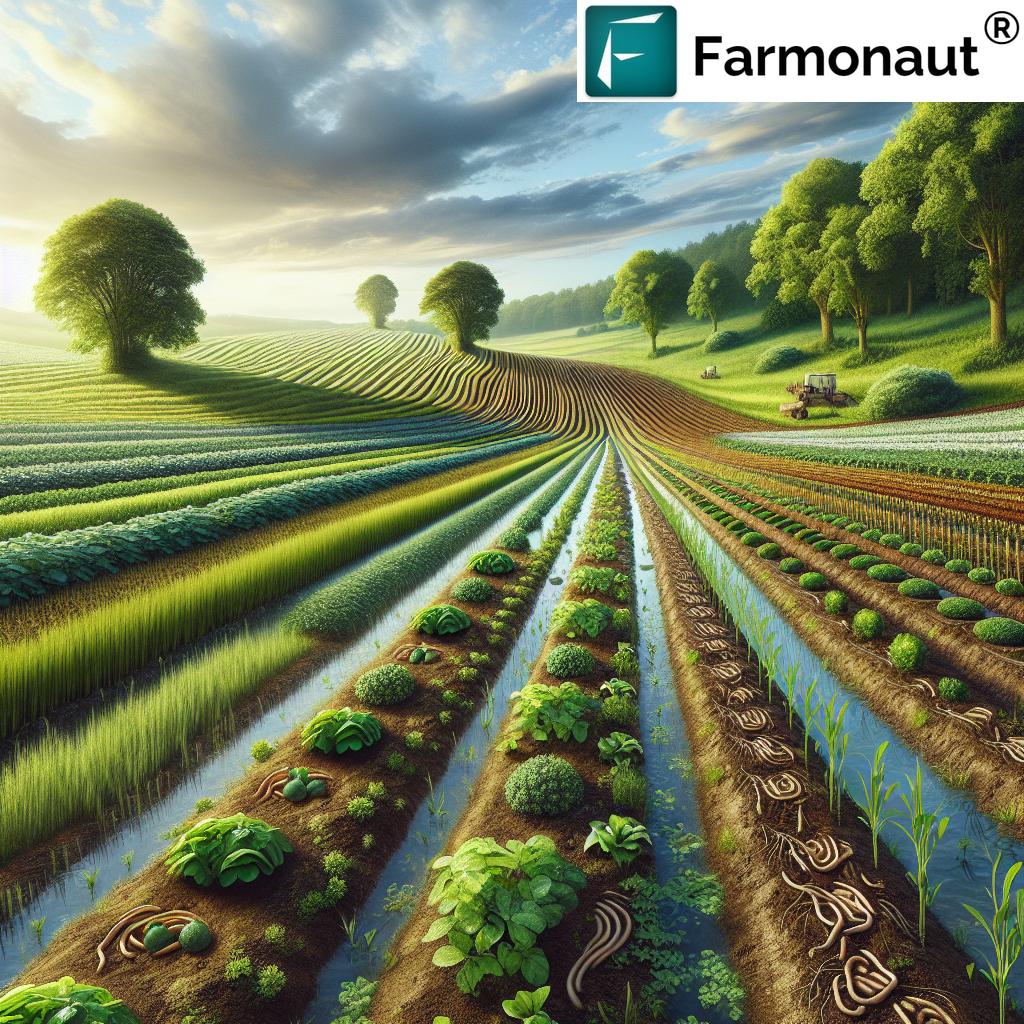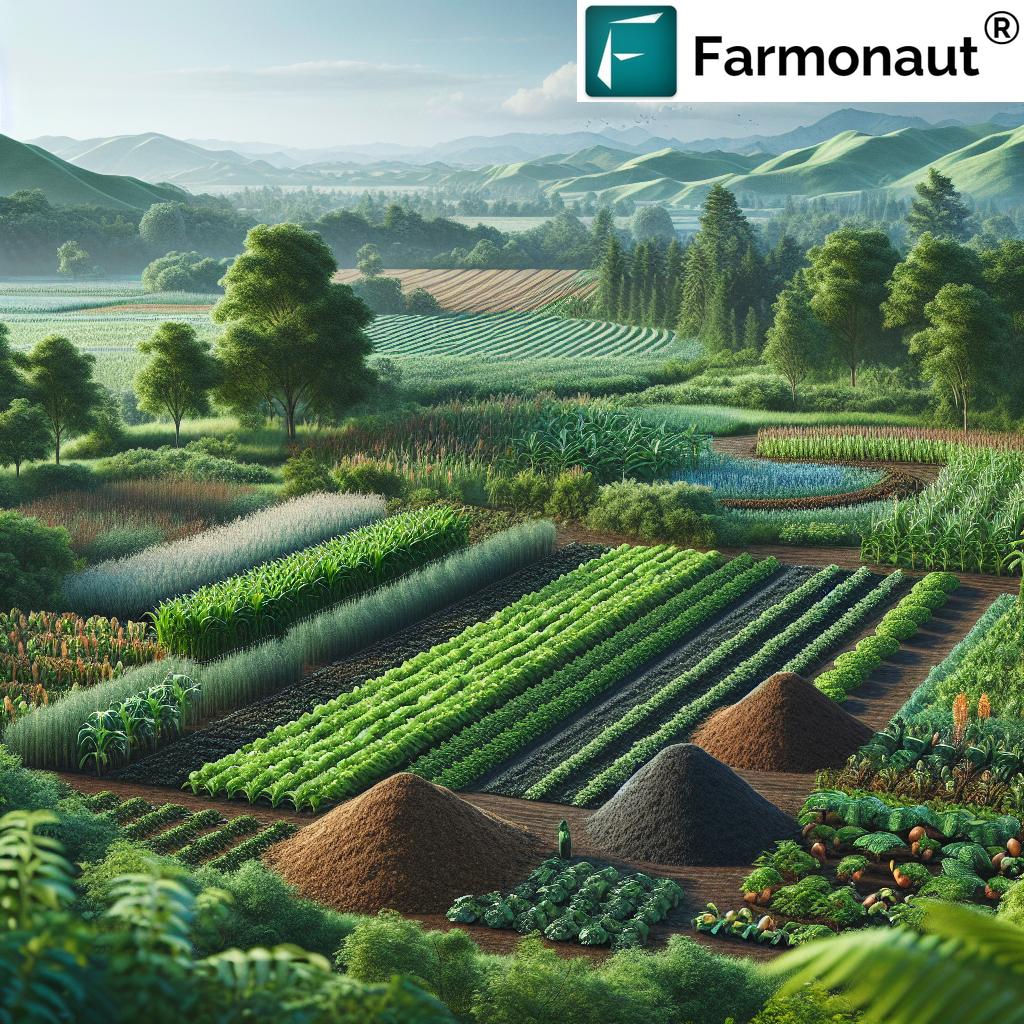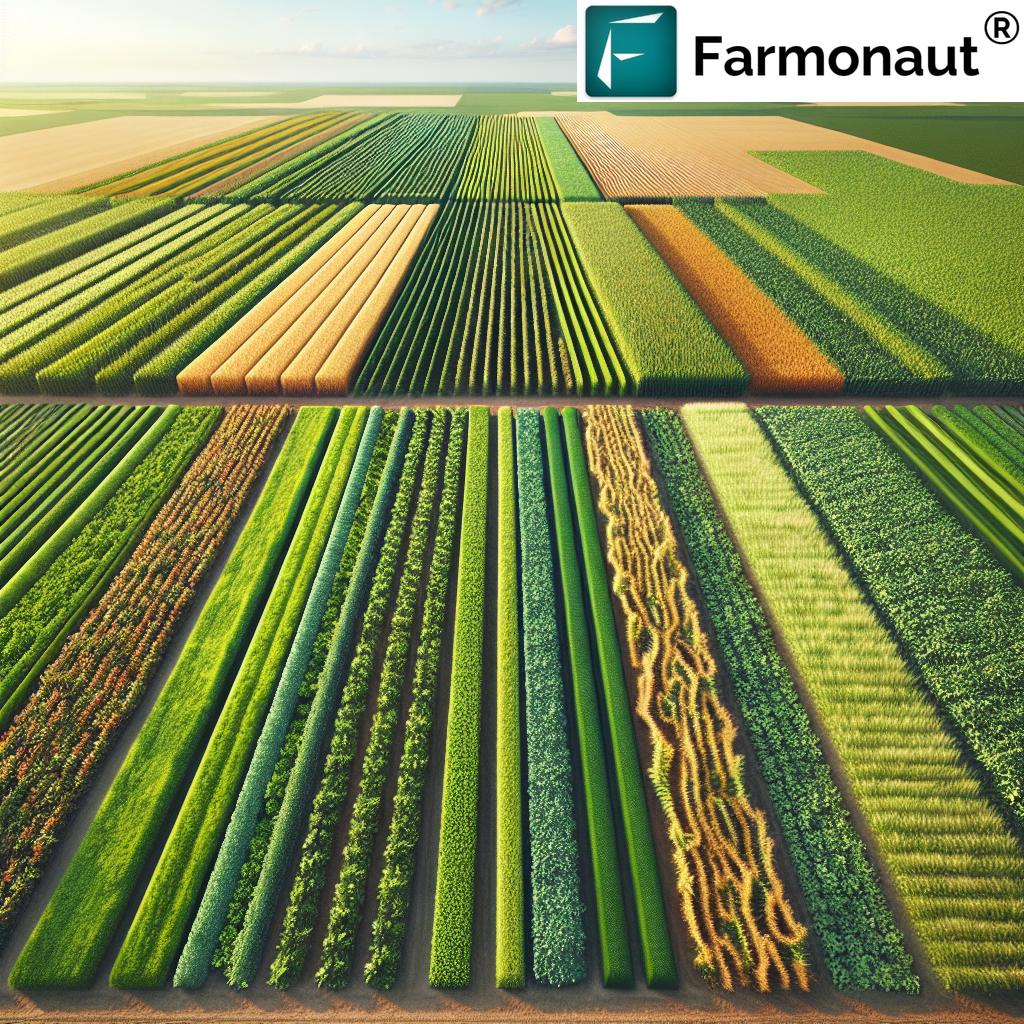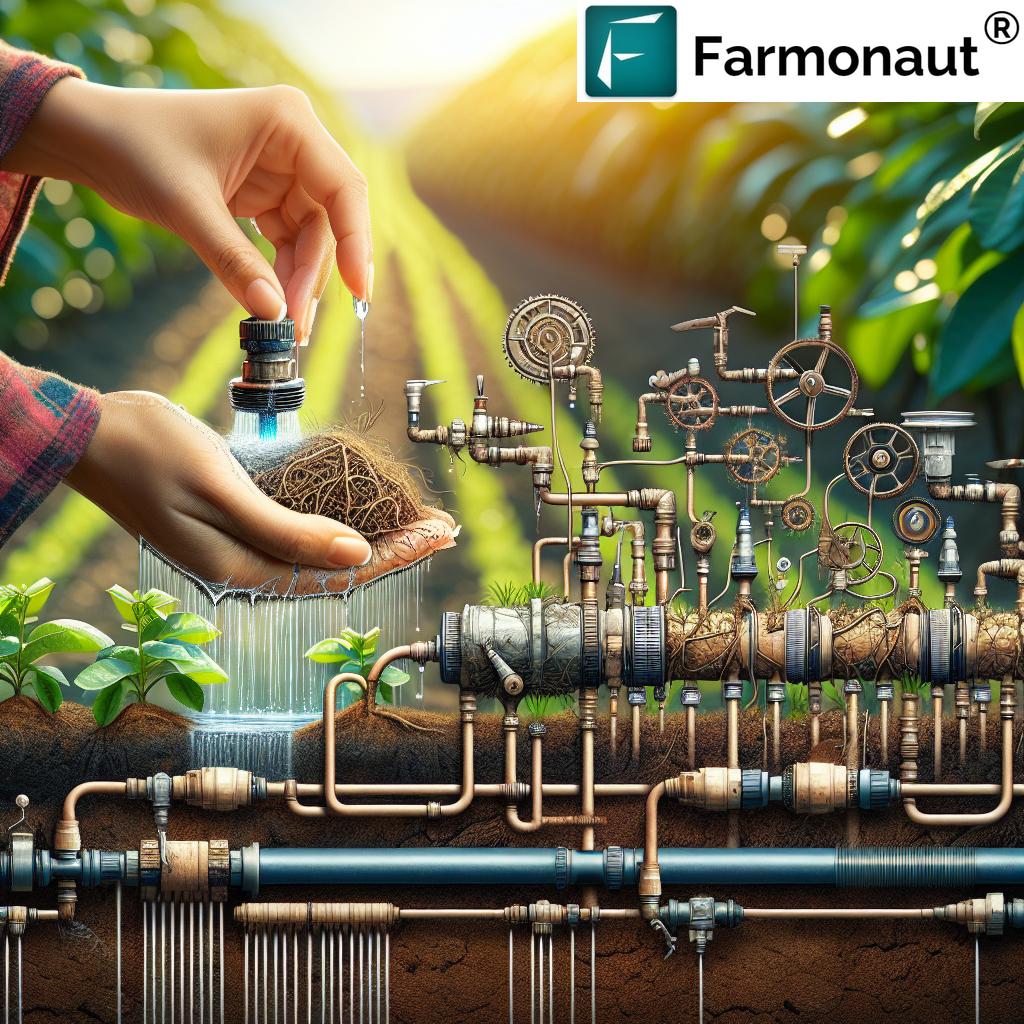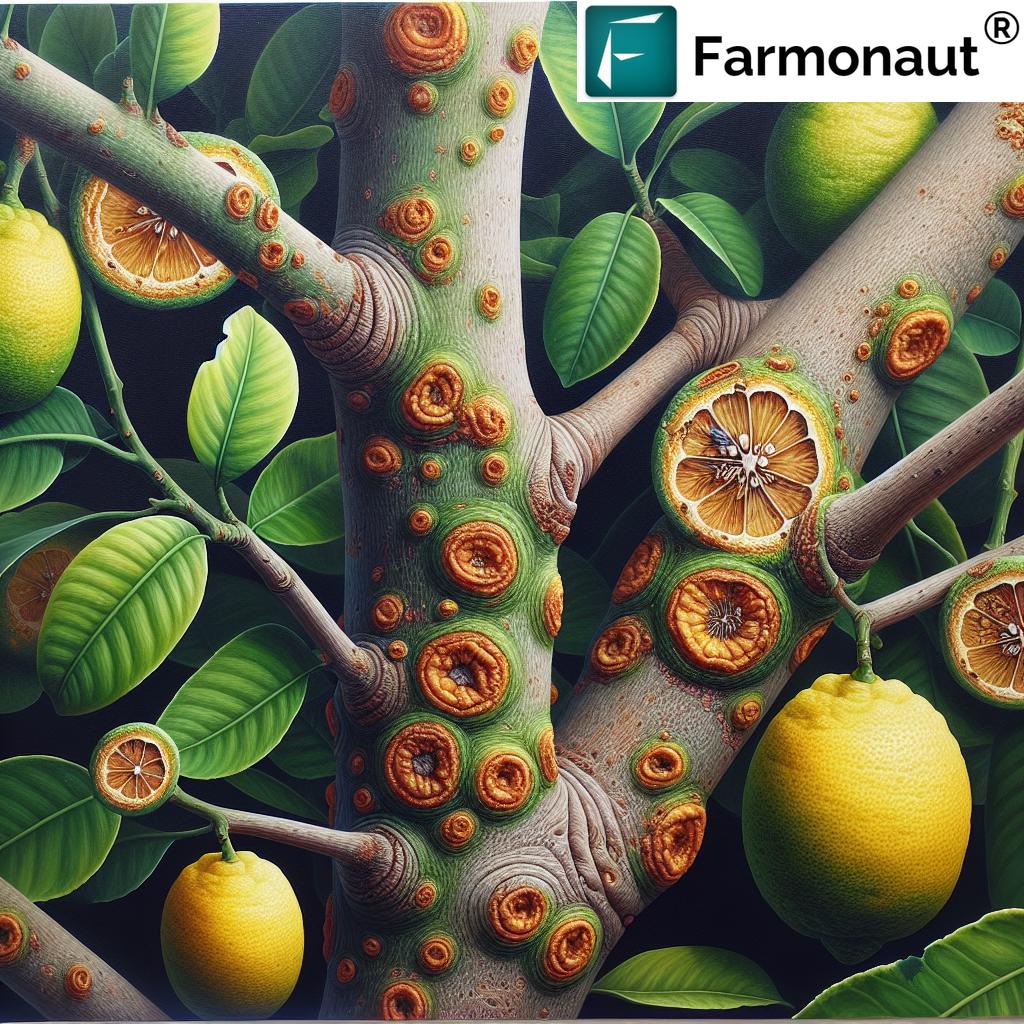Sustainable and Eco Friendly Farming Practices: Top 10 Methods
In today’s rapidly changing agricultural landscape, sustainable farming practices have become the cornerstone for ensuring ecological balance, food security, and the long-term viability of our farms and communities. As global pressures on land, soil, and water resources intensify, adopting eco-friendly farming solutions is no longer optional—it’s essential for protecting our environment and agricultural productivity.
By leveraging the latest innovations alongside time-tested organic farming methods, we can enhance soil fertility, maximize yields, conserve precious water, and support vibrant ecosystems.
“Over 60% of global farmers use crop rotation to boost soil health and reduce chemical fertilizer dependence.”
Why Are Sustainable Farming Practices Essential?
At its core, sustainability in agriculture aims to balance the imperative of food production with the preservation of ecological integrity. We, as farmers and stewards of the land, must pay attention to the impact of our practices—from reducing chemical use and soil erosion to protecting water resources and diverse natural habitats.
- Enhances Soil Health: Building up organic matter and improving soil fertility naturally
- Protects Water Resources: Through water conservation in agriculture
- Reduces Environmental Pollution: Limiting chemical runoff that pollutes streams, rivers, and groundwater
- Promotes Biodiversity: Encouraging beneficial organisms, natural predators, and more resilient ecosystems
- Mitigates Climate Change: Regenerative agriculture techniques sequester carbon and foster climate resilience
Let’s explore the top 10 eco-friendly farming methods that are revolutionizing the future of global agriculture!
Top 10 Sustainable and Eco Friendly Farming Methods
Below, we present a deep dive into the most effective, evidence-based, and widely adopted sustainable farming practices and how they contribute to food security, environmental health, and climate resilience.
1. Organic Farming: Building Soil Health and Reducing Chemical Use
Organic farming methods form the foundation of sustainable agriculture. This approach avoids synthetic fertilizers and chemical pesticides, instead focusing on composting, crop rotation, and the use of natural amendments to replenish and improve soil fertility naturally. The result is a healthier soil structure and reduced pollution from runoff into local water supplies.
- Preserves Biodiversity: Organic methods support diverse habitats, beneficial organisms, and natural pest predators
- Enhances Soil Matter: ((Re)building organic carbon, structure, and fertility)
- Improves Crop Quality: Reduces chemical residues, promoting safe food production
By minimizing disturbance to both the land and surrounding ecosystems, organic farming delivers lasting benefits for our families, communities, and future generations.
2. Agroforestry: Integrating Trees for Multiple Benefits
Agroforestry integrates trees and shrubs into agricultural landscapes, creating dynamic systems that provide numerous benefits:
- Improves Soil Structure & Fertility: Roots stabilize soil, cycle nutrients, and boost organic matter levels
- Reduces Erosion: Canopy coverage protects the ground from intense rainfall and wind
- Enhances Water Retention: Shading reduces water loss from evaporation, increasing soil moisture holding capacity
- Sequesters Carbon Dioxide: Absorbing atmospheric CO2, mitigating climate change impacts
By combining biological diversity with productive agriculture, agroforestry supports natural pest control, pollinator habitats, and climate resilience.
3. No-Till Farming: Reducing Disturbance, Maximizing Resilience
No-till farming benefits both soil and farmer. In this technique, we plant crops without disturbing the soil through traditional tilling practices. Instead, the previous crop’s residue covers the field, preventing:
- Soil Erosion: Cover residue acts as a barrier against wind and rain
- Water Loss: Mulch conserves soil moisture and improves water retention
- Loss of Organic Matter: Maintaining soil structure boosts soil fertility over time
- Habitat for Beneficial Organisms: Earthworms and microbes thrive, further enriching soil health
By minimizing tillage, we conserve resources, cut fuel consumption, and reduce greenhouse gas emissions—key steps in sustainable farm management.
4. Integrated Pest Management (IPM): Smart, Eco-Friendly Pest Control
Integrated pest management (IPM) is a holistic approach combining multiple pest control strategies:
- Cultural: Crop rotation, intercropping, and field hygiene
- Biological: Using natural predators like ladybugs, birds, and beneficial insects
- Chemical (as last resort): Targeted interventions to avoid pest resistance
- Monitoring and Thresholds: Making precise decisions based on pest population data
IPM reduces chemical use in farming, protects biodiversity, and decreases risk of pest resistance—while keeping yields high and the environment safe.
With Farmonaut’s product traceability solutions, farmers can ensure safer produce by proving responsible pest control and transparent agricultural practices to end-users.
5. Cover Cropping for Soil Health and Erosion Control
Cover cropping for soil health is a time-honored way of protecting and improving soil fertility naturally. During fallow periods, we plant cover crops such as legumes, clover, or rye grasses. Their many benefits include:
- Suppressing Weeds: Cover leaves block sunlight to unwanted plants
- Controlling Erosion: Dense roots anchor the soil, minimizing loss
- Improving Nutrient Cycling: Some cover crops fix nitrogen or scavenge nutrients, reducing fertilizer dependence
- Enhancing Water Infiltration: Soil remains open and absorbs more rainfall
- Boosting Soil Organic Matter: Crop residue breaks down, building long-term soil health
6. Conservation Tillage: Preserving Soil Integrity and Reducing Erosion
Unlike conventional ploughing, conservation tillage minimizes disturbance of the soil surface. Methods like strip-till, mulch-till, or zone-till leave crop residue in place, preserving valuable organic matter and soil structure.
- Reduces Fuel Use: Fewer passes with machinery saves resources and cuts greenhouse emissions
- Protects Against Runoff: Residue slows water movement and blocks soil loss
- Enhances Soil Health: Supports earthworms, microbes, and other beneficial organisms
Conservation tillage supports a resilient agricultural system and is easily combined with other eco-friendly methods like cover cropping and crop rotation.
7. Permaculture: Mimicking Nature for Self-Sustaining Systems
Permaculture is an ecosystem-based design philosophy, focusing on resilient food production that works with nature, not against it. Principles include:
- Polyculture: Growing multiple crops together to maximize diversity
- Companion Planting: Selecting plants that enhance each other’s growth, repel pests, and reduce chemical requirements
- Perennial Crops: Emphasizing plants that return each year, reducing soil disturbance
- Holistic Management: Observing site-specific needs to optimize water, nutrients, and energy flow
Permaculture’s resource efficiency, waste reduction, and ecosystem support make it an ideal approach for sustainable farming.
8. Aquaponics & Hydroponics: Efficient, Water-Saving Cultivation
Aquaponics and hydroponics employ water-based cultivation methods that drastically reduce consumption compared to field-grown crops. Key advantages include:
- Reduced Water Use: Recirculating systems lose little water to evaporation or runoff
- No Need for Soil: Enables farming in non-traditional environments (urban rooftops, arid lands)
- Waste Recycling: Fish waste in aquaponics feeds plants; plants clean the water for fish
- Controlled Environment: Precision management of nutrients and pests
- Year-Round Production: Greenhouses maintain optimal conditions regardless of season
These methods are ideal for locations facing severe water scarcity, urban expansion, or for farmers seeking efficient resource use.
9. Water Conservation in Agriculture: Smart Irrigation and Efficient Use
Effective water conservation in agriculture is vital, especially as we witness climate change impacts and increasing demand on resources. Essential techniques include:
- Drip Irrigation: Delivers water directly to roots, cutting losses from evaporation and runoff
- Rainwater Harvesting: Collects and stores rain for irrigation, reducing strain on local water bodies
- Soil Moisture Sensors: Prevents over- or under-watering by giving real-time data
- Mulching: Retains moisture by shading soil, minimizing the frequency of irrigation
Farmonaut’s satellite-based soil moisture monitoring allows us to maximize water use efficiency at field scale—an invaluable support for sustainable, resilient agriculture. Access Farmonaut’s API for integrating advanced water management data in your farm apps.
“Drip irrigation can save up to 50% more water compared to traditional flood irrigation methods in sustainable farming.”
10. Biointensive Agriculture & Regenerative Agriculture Techniques
Biointensive agriculture is centered on maximizing yields while minimizing resource inputs. Regenerative agriculture, meanwhile, aims to restore soil health, increase biodiversity, and reverse environmental degradation. Common practices include:
- Dense Planting: Maximizes photosynthesis and yields per area
- Composting: Recycles waste into nutrient-rich fertilizer, improving soil fertility naturally
- No-Till & Cover Cropping: Core elements for building resilient soil structure
- Rotational Grazing: Manages livestock movement to mimic natural patterns and restore grasslands
These regenerative agriculture techniques contribute to global food systems that are climate-friendly, self-renewing, and supportive of natural ecological cycles.
How Farmonaut Empowers Sustainable Farming Practices
At Farmonaut, we are committed to supporting sustainable farming worldwide. Our advanced satellite-based platform delivers real-time crop health, soil moisture, and resource management data to empower farmers, agribusinesses, and organizations.
- Precision Agriculture at Scale: Real-time satellite insights for smallholders and large-scale producers
- AI-Powered Advisory (Jeevn): Personalized farm management advice informed by weather, satellite, and field data
- Blockchain Traceability: Boosting transparency and trust in food supply chains
- Resource & Carbon Management: Track farm carbon footprinting and resource use for sustainability reporting
- Satellite-Powered Crop Risk Assessment: Enabling accurate crop loan and insurance verification
- Scalable & Affordable: Flexible subscriptions, API, and tools for every farm size – accessible on web, iOS, and Android
Comparison of Top 10 Sustainable Farming Practices
| Method Name | Key Benefits | Implementation Difficulty | Estimated Cost | Potential Yield Impact |
|---|---|---|---|---|
| Crop Rotation | Soil health, pest & disease control, reduces fertilizer needs | Easy | Low | Positive |
| Drip Irrigation | Water use efficiency, reduces disease, improves yields | Moderate | Medium | Positive |
| Cover Cropping | Improves soil fertility, erosion control, weed suppression | Moderate | Low | Positive |
| Organic Mulching | Moisture retention, weed suppression, temperature control | Easy | Low | Neutral |
| Integrated Pest Management | Biodiversity, reduces chemical use, pest resistance management | Moderate | Low | Positive |
| Agroforestry | Carbon sequestration, soil/water improvement, wildlife habitat | Challenging | Medium | Variable |
| Conservation Tillage | Reduces erosion, fuel savings, improves soil structure | Moderate | Low | Neutral |
| Rainwater Harvesting | Water conservation, reduces drought risk, cost-saving | Easy | Low | Positive |
| Composting | Improves soil fertility, reduces waste, supports microbes | Easy | Low | Positive |
| Biological Pest Control | Eco-friendly, sustainable pest management, enhances biodiversity | Moderate | Low | Positive |
Key Challenges in Adopting Eco-Friendly Farming Solutions
Despite the benefits, transitioning to sustainable farming practices is not without obstacles. Let’s address the essential challenges and how we can overcome them:
-
Initial Costs: Many transitions—like drip irrigation, advanced monitoring, or new planting equipment—require upfront investment.
Farmonaut’s subscription services are designed to be accessible and scalable, making advanced farm analytics affordable for every farmer. -
Knowledge Gap & Education: Not all farmers have easy access to the latest sustainable methods or data-driven advice.
Farmonaut’s AI-driven Jeevn advisory delivers real-time, tailored recommendations based on your crops, climate, and soil conditions—right to your digital device. -
Market Demand: While ethical and eco-conscious consumers are growing in number, many still prioritize low cost over sustainability.
Farmonaut’s traceability module helps farmers prove eco-friendly methods, boosting trust and attracting premium markets. -
Climate Variability: Changing weather patterns and unpredictable events heighten the risks of crop loss.
By monitoring real-time crop health and providing early warnings, Farmonaut equips farmers to build robust, climate-adaptive systems.
The solution? Education, digital access, and community support—paired with innovative tools like Farmonaut’s platform—make the journey toward sustainable agriculture achievable for all.
Conclusion & Next Steps
Embracing sustainable and eco-friendly farming practices is our collective responsibility—to safeguard the environment, conserve resources, and ensure future food security. From organic farming and cover cropping to advanced integrated pest management and regenerative agriculture techniques, the pathway to greener, resilient agriculture is clear.
- Start small: Choose one new eco-friendly practice to implement this season—monitor your impact, learn, and expand.
- Leverage digital tools: Use Farmonaut’s real-time insights for smarter water use, efficient resource management, and transparent reporting—no matter your farm’s size or location.
- Tell your story: Use traceability solutions to share your sustainable journey with buyers & partners.
The future of agriculture belongs to those who innovate sustainably. Join us in this mission. Get started with Farmonaut—your global partner in precision, cost-effective, and eco-friendly farming today.
Frequently Asked Questions (FAQs) About Sustainable Farming Practices
-
Q: What are the core goals of sustainable farming?
A: To ensure food production while conserving natural resources, protecting the environment, and supporting farmers’ livelihoods long-term.
-
Q: How does organic farming improve soil health?
A: By avoiding synthetic chemicals, using natural compost, rotating crops, and building up organic matter—leading to richer, more productive soils.
-
Q: Why should farmers use integrated pest management instead of just pesticides?
A: IPM combines biological, cultural, and targeted chemical controls, reducing pest resistance risk, safeguarding biodiversity, and cutting input costs.
-
Q: Can sustainable practices really boost crop yields?
A: Yes! Techniques like cover cropping, crop rotation, water-saving irrigation, and biointensive planting often result in equal or higher yields—while improving resource efficiency.
-
Q: How do Farmonaut’s satellite tools fit into sustainable agriculture?
A: Farmonaut delivers real-time crop health and resource analytics—helping farmers optimize water, nutrients, and pest control with data-driven precision.
-
Q: Where can I find more info on Farmonaut’s API and platform?
A: See Farmonaut’s Developer Docs for integrating advanced agri-data into your systems.
Let’s work together for a prosperous, resilient, and truly sustainable agricultural future!


